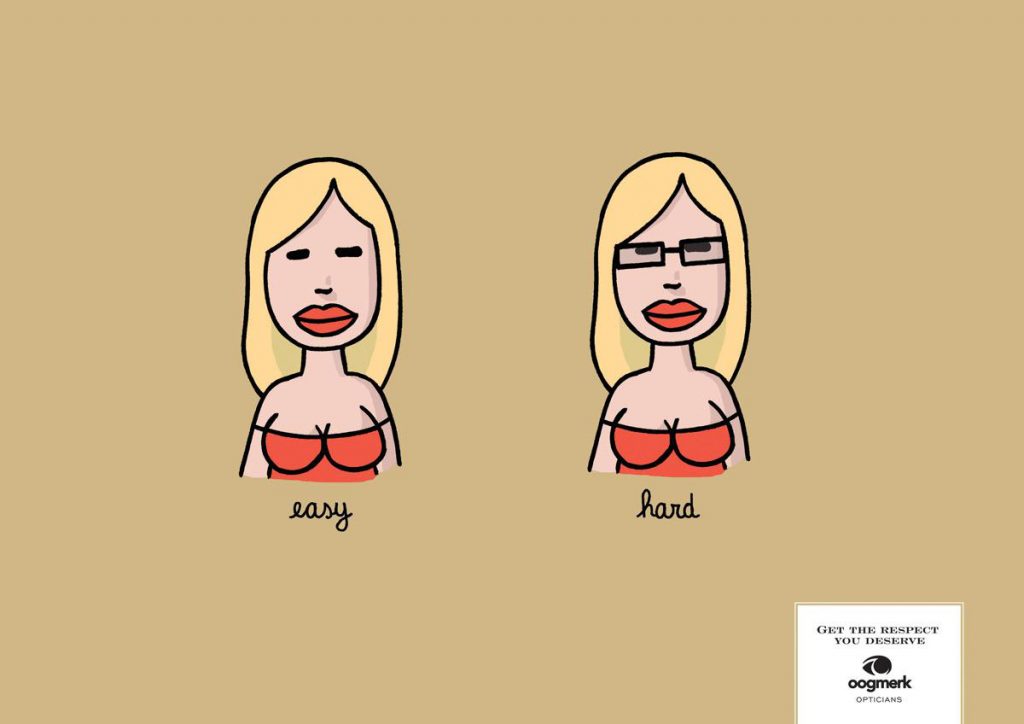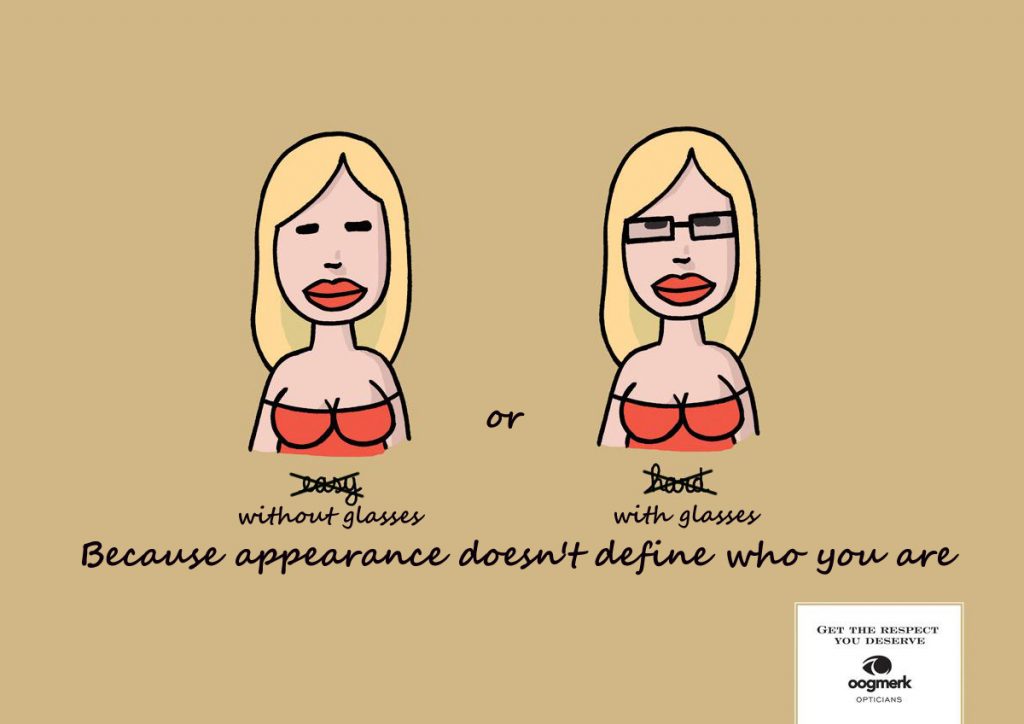Original Advertisement

Advertisement for Oogmer Opticians by LG&F.https://www.adsoftheworld.com/media/print/oogmerk_hard, 15 Jun. 2007
Analysis
The above picture is an advertisement from Oogmerk opticians promoting the purchase of glasses. The advertisement incorporates the method of comparison by having two identical women in skimpy outfits one with glasses and one without each labelled as “hard” or “easy” to show the benefit of having glasses. Followed by the slogan “get the respect you deserve” further conveys that glasses are necessary to gain respect. However, the advertisement did not account for the discriminating message embedded in their marketing methods.
Despite the slogan “get the respect that you deserve” the advertisement labels the two women with adjectives such as “easy” or “hard” which are both words that may imply a sexual connotation and thus disrespect their decision to dress in the outfit of their choice. Furthermore, by labeling the two in a contrasting manner using their appearance as the only basis, the advertisement implies that respect comes from the outer appearance. This message ignores or dismisses other characteristics of an individual such as morality or personal values. In the end, the advertisement reflects and promotes lookism, a type of discrimination based solely on people’s appearance.
Moreover, the advertisement focuses heavily on the use of glasses as a fashion statement and neglects to recognize them as an important visual aid for those who have vision problems. Failing to do so trivializes the struggles of people with visual disabilities, such as myopia and dismisses the an inherent discrimination that people wearing glasses face, for example being called “four-eyes” which is a situation commonly depicted in children literature.
Jammed Advertisement

Rational
In the new version of the ad, the words “easy” and “hard” is crossed out rather than erased. This decision attempts to bring attention to and criticize the demeaning labels that imply a sexual connotation on the female figures before rejecting the terms completely. Afterwards, descriptions “without glasses” and “with glasses,” the only perceivable difference between the two figures, are added underneath the crossed out labels. The new descriptions correct the previous misrepresentation by only noting the difference between the two in a neutral tone rather than making a comment that implies any judgement.
The slogan does not go through any changes since the major issue is the method that the original advertisement promoted to acquire respect which is change one’s outer appearance by wearing glasses. Instead of altering the slogan, the word “or” is added in between the two women to destroy the framework that contrasted the two women in the original advertisement. By removing the contrasting framework, the jammed advertisement attempts to convey the message that both women in the image equally deserves respect.
Finally, the phrase “because appearance shouldn’t decide who you are” is added in the jammed version of the advertisement to convey the message that there are other characteristics that define an individual. By doing so, the phrase completely eradicates the lookism that was previously reflected in the original advertisement. Furthermore, taking into account the fact that using glasses does not always signify visual impairment and vice versa, the phrase tries to break the prejudiced attitude against glasses as well.
